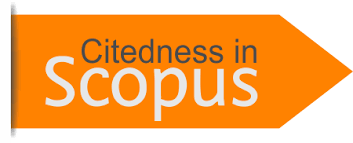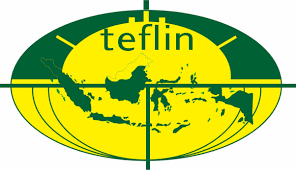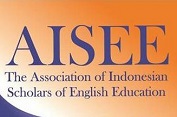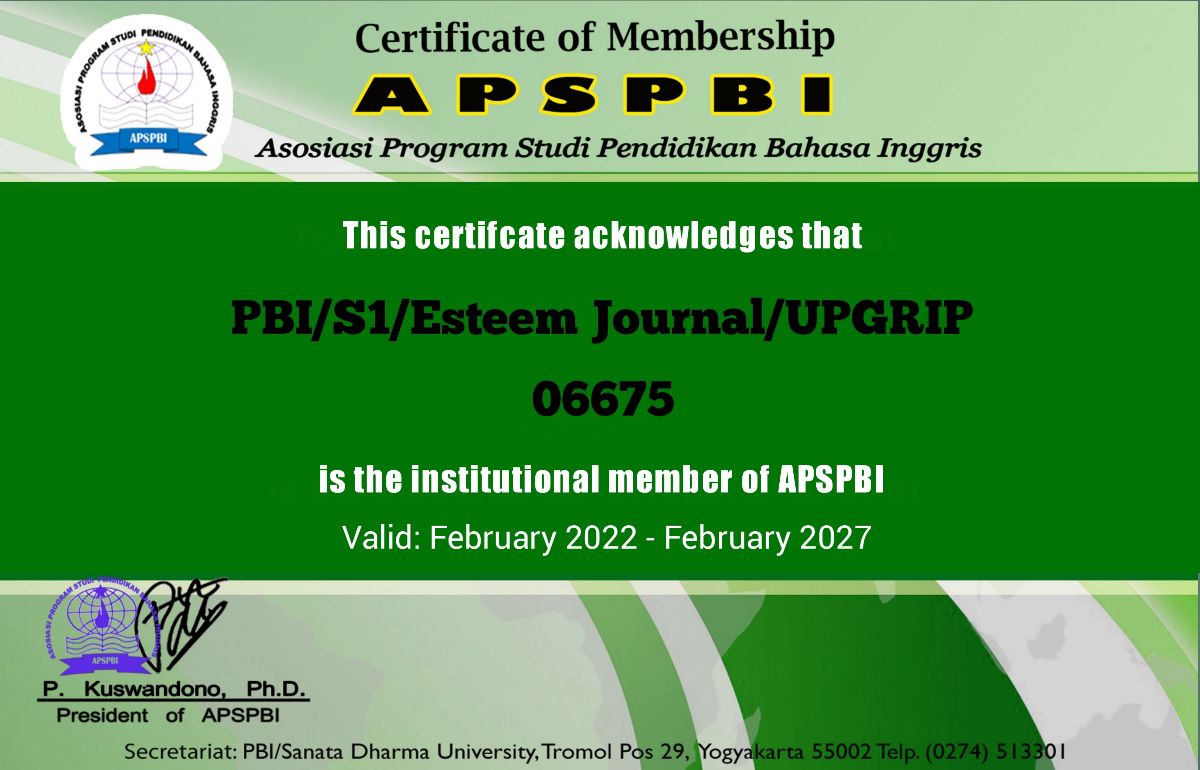TRANSFERRING CULTURAL KNOWLEDGE IN LOCAL NARRATIVE READING FOR EFL STUDENTS
DOI:
https://doi.org/10.31851/esteem.v4i2.6181Keywords:
Indonesia, EFL teacher and students, Cultural knowledge, and Local narrative readings.Abstract
Indonesia has many narrative reading and different culture of many regions. Lacking of appreciation of own local culture is a continuing concern for many countries, including Indonesia. Through its constitution, the governement of Indonesia recommends that the education sector take part actively in preserving Indonesia local cultures. EFL teachers should use them in their teaching and learning process as one of the resources to apply to preserve culture for younger generations (EFL students). This research used local narrative reading to able the EFL teachers to preserve Indonesia culture as well as to transfer culture knowledge which makes their students study English and its culture with ease.
References
Byram, M.(1998). Cultural identities in multilingual calssrooms. In J Cenoz & Genesee, F. (Eds), Beyond bilingualism (pp.96-116). Clevedon: Multilingual Matters.
Cunningsworth, A.(1995). Choosing your coursebook.Oxford: Heineman English Language Teaching.
Hall, S.(1997). Representation; Cultural Representation and signifying practices. London: Sage in association with the Open University.
Harsono, YM. (2006). English language teaching in indonesia: facts, problems and possible solution, English.edu journal.5 (2).
Hermawan, B. & Noerkhasanah, L.(2012). Trace of cultures in English textbook for primary education. Indonesian journal of Applied Linguistics. 1(2),49 -61.
Kramsch, C.(1995). The cultural component of language teaching language, cultureand curriculum. Language, culture and curriculum, 8(2),83-92
Lauder, A.(2008). The status and function of English in Indonesia: a review of key factors.
Makara Social Humaniora, I (1), 9-20
Linda, G.& Peter, W. (1994). Making Sense of functional grammar. Australia: Gerd Stabler. Mantiri, O. (2006). ELT in Indonesia: What culture should be taught? Retrieved from elt-
indonesia.blogsport.com/2006/culture-sensitive-approach- in-elt.html.
Mark, A.,& Kathy.(1997) Text types in English. Newyork, NY:Macmillan
McKay, SL.(2000). Teaching English as an International language: Implications for cultural materials in the classroom. TESOL journal,9(4),7-11
Peraturan menteri pendidikan dan kebudayaan Nomor 54 tahun 2013 tentang standar kompetensi lulusan pendidikan dasar dan menengah.
Risager, K.(2005). Language culture as akey concept in language and culture teaching. In B. Preisler, A.Fabricious, Haberland, Hurtmut., Kjaerbaeck, S.& Risager, K(eds). The Consequences of mobility(pp.185 -196). Roskilde: Roskilde University, Dept. Of language and culture.
Risager, K.(2007) Language and culture pedagogy: from national to a transnational paradigm. UK: Multulingual Matters Ltd.
Sharif. & Mohammadi. (2013). Cultural, national identity, and globalization between the lines of reading comprehension texts in Iran. Elixir Ling.& Trans. 56, 1342-1345.
Smith, J., & Weise, P. (2006).Authenticating children’s literature: Raising cultural awareness with an inquiry – based project in a teacher education course. Teacher quarterly, 69- 87.
Tarwiyah, S.(2008). Modul game and songs, practical ideas to teach language. Semarang : unpublisher.
Woodward, K. (1997). Identity and difference. London: Sage Publication L
Downloads
Published
Issue
Section
License
Copyright Notice
Authors who publish with this journal agree to the following terms:
In order to assure the highest standards for published articles, a peer review policy is applied. In pursue of the compliance with academic standards, all parties involved in the publishing process (the authors, the editors and the editorial board and the reviewers) agree to meet the responsibilities stated below in accordance to the Journal publication ethics and malpractice statement.
Duties of Authors:
- The author(s) warrant that the submitted article is an original work, which has not been previously published, and that they have obtained an agreement from any co-author(s) prior to the manuscript’s submission;
- The author(s) should not submit articles describing essentially the same research to more than one journal;
- The authors(s) make certain that the manuscript meets the terms of the Manuscript Submission Guideline regarding appropriate academic citation and that no copyright infringement occurs;
- The authors(s) should inform the editors about any conflict of interests and report any errors they subsequently, discover in their manuscript.
Duties of Editors and the Editorial Board:
- The editors, together with the editorial board, are responsible for deciding upon the publication or rejection of the submitted manuscripts based only on their originality, significance, and relevance to the domains of the journal;
- The editors evaluate the manuscripts compliance with academic criteria, the domains of the journal and the guidelines;
- The editors must at all times respect the confidentiality of any information pertaining to the submitted manuscripts;
- The editors assign the review of each manuscript to two reviewers chosen according to their domains of expertise. The editors must take into account any conflict of interest reported by the authors and the reviewers.
- The editors must ensure that the comments and recommendations of the reviewers are sent to the author(s) in due time and that the manuscripts are returned to the editors, who take the final decision to publish them or not.
Authors are permitted and encouraged to post online a pre-publication manuscript (but not the Publisher final formatted PDF version of the Work) in institutional repositories or on their Websites prior to and during the submission process, as it can lead to productive exchanges, as well as earlier and greater citation of published work (see The Effect of Open Access). Any such posting made before acceptance and publication of the Work shall be updated upon publication to include a reference to the Publisher-assigned DOI (Digital Object Identifier) and a link to the online abstract for the final published Work in the Journal.





























